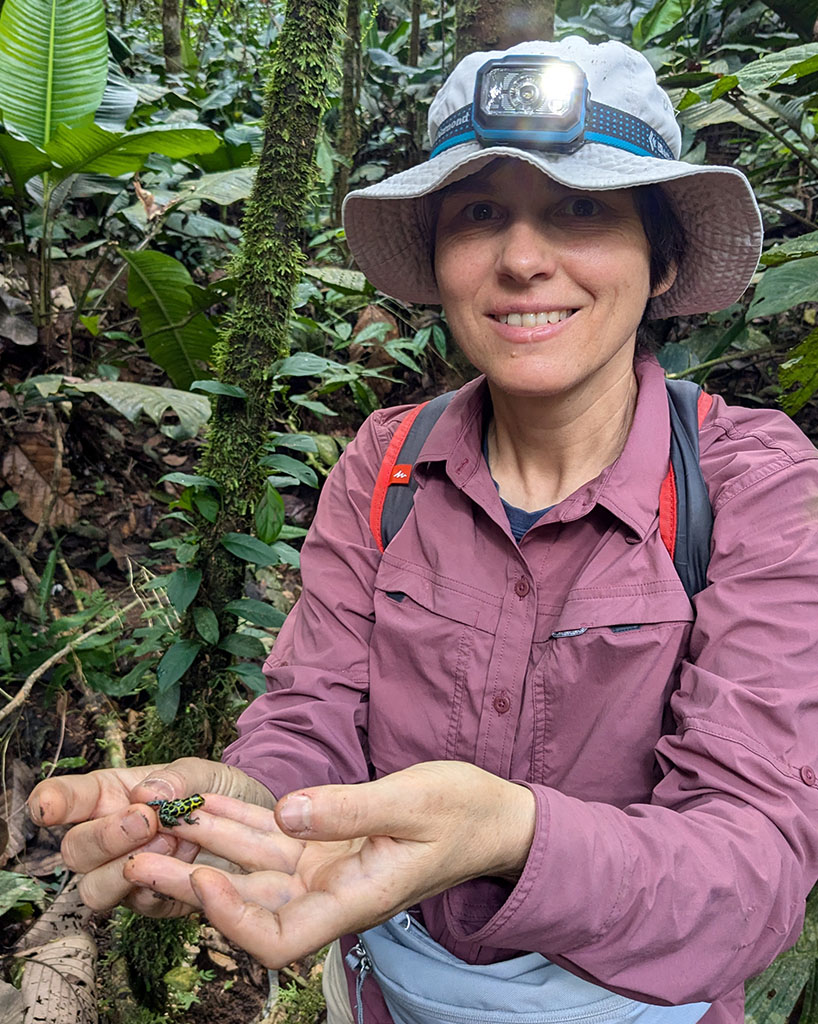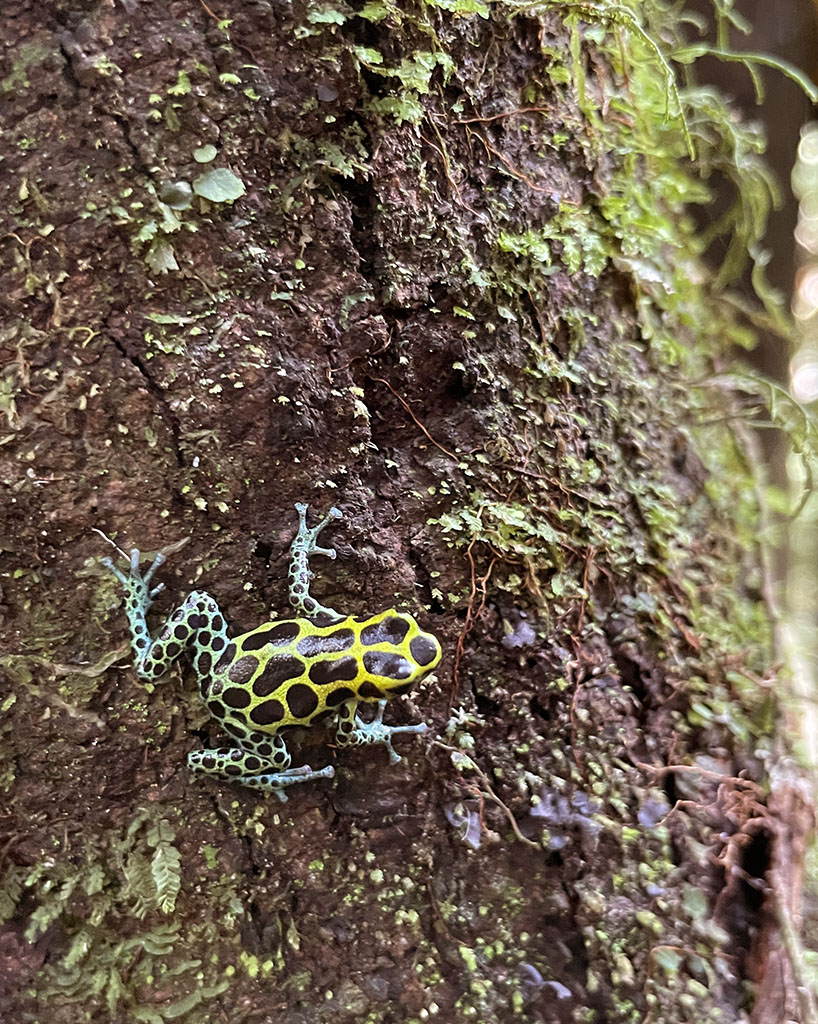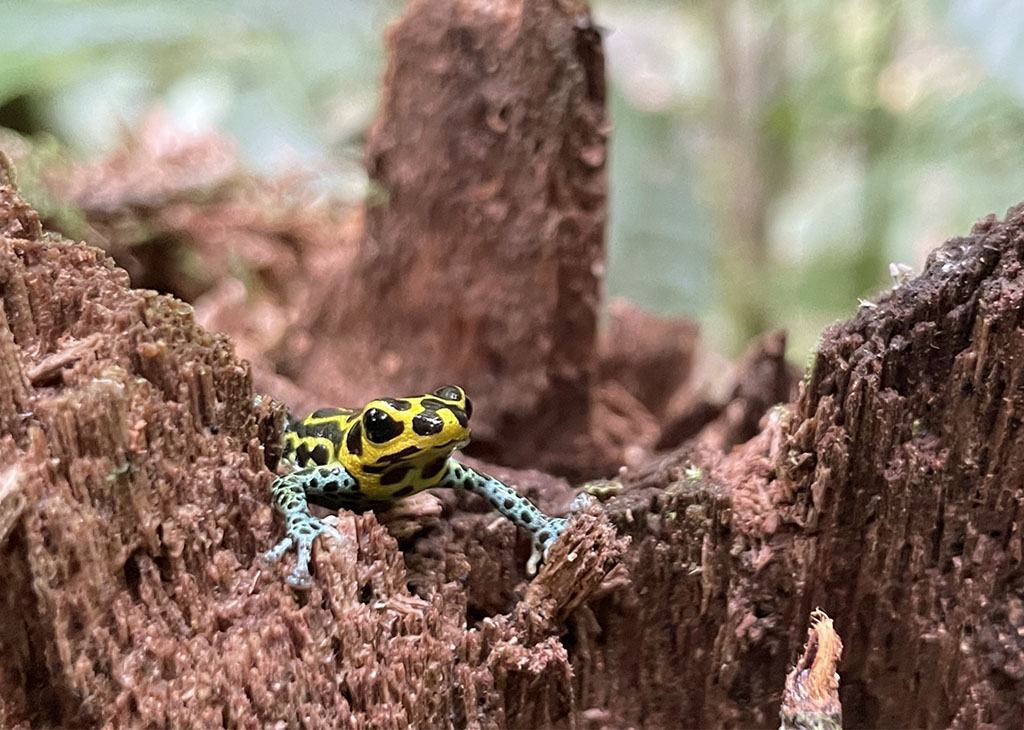How Do Poison Frogs Get their Colorful Skins?
Ph.D Student Galina Aglyamova Received a NSF Graduate Student Fellowship to Further Work on the Question
You’ve probably seen tadpoles in standing puddles of water after a rain – tiny swimming creatures that don’t draw much attention to themselves.

It’s what happens next in some species that interests Galina Aglyamova – what influences the colors and patterns that characterize poison frogs as they undergo the metamorphosis from tadpole to frog.
Aglyamova, a biology Ph.D. student in the University of Houston’s College of Natural Sciences and Mathematics, has been recognized with a National Science Foundation Graduate Student Fellowship as she pursues the question. The competitive award is open to students pursuing a master’s or doctoral degree in the social sciences, STEM or STEM education fields.
Poison frogs are among the best-known examples of aposematic amphibians, animals that use warning coloration to alert predators that they are harmful – stay away, or risk poisoning from toxins present in the frog’s skin. Aglyamova is studying how that bright coloration develops, and why there is so much variation in patterns and color even within the same species.
“I want to see what factors influence coloration,” she said. “I want to find out how different rearing environments, like more or less light during the tadpole stage, influences the coloration of juveniles and if it carries over into adulthood.”
Poison Frogs, Eastern Newts
Aglyamova, who works in the lab of assistant professor Adam Stuckert, is focused on two species of poison frogs found in Peru, Ranitomeya imitator and Ranitomeya variabilis. She aims to expand the work to eastern newts, a type of aposematic salamander common in forests of the eastern United States, comparing their color genes with those of tropical frogs.

Ranitomeya variabilis, a small Peruvian frog, has two distinct color morphs, green and black spots and orange and black stripes. The benefit of that diversity of appearance is unclear, Aglyamova said. “If you want to warn predators to avoid you because you are poisonous, it would make sense for them all to be the same bright color. For example, if they all were red.”
But not only do different species of aposematic frogs develop different coloration and patterns, one of them, Ranitomeya imitator, has the ability to mimic multiple frog species.
“The variety is huge. It seems illogical,” Aglyamova said. “It is also interesting biochemically. We’re trying to understand the genetic mechanism of how it is happening. If you look at these frogs, you would never guess they’re the same species.”
Stuckert said understanding that variation could yield new insights not only into aposematic amphibians but ultimately into human biology.
“These organisms are able to adapt throughout their lifetimes to a variety of conditions. Understanding how they are able to do that and how it affects things like physical appearance, colors and patterns, but also how they deal with different stressors, will provide insight,” he said.

Carotenoids found in the skin of newts are related to coloration, for example, but Stuckert said they can play a different role in the human body, including supporting immune function. “Understanding how these amphibians deal with these compounds can elucidate the pathways in humans.”
Field Work, Lab Work, Genetic Analysis
Aglyamova spent last summer in Peru, collecting frogs and data, including spectral measurements, physical observations and environmental data. While there, she began experimenting with the impact of different light levels during the tadpole stage as part of the effort to determine what environmental factors may affect coloration.
The work is continuing at UH, along with more detailed experiments – including sequencing DNA and RNA – to learn more about how gene expression regulation influences skin pattern and color between different animals, and life stages of the same organism.
“We’re trying to find how they produce the colors biochemically, and how one species can produce different patterns and colors,” she said.
Aglyamova said the work could eventually shed light on certain skin conditions affecting humans, including vitiligo. “Skin is the biggest organ in our body, and there is still much we don’t know. Frogs are good models to study conditions about the skin.”
- Jeannie Kever for College of Natural Sciences and Mathematics
November 21, 2024